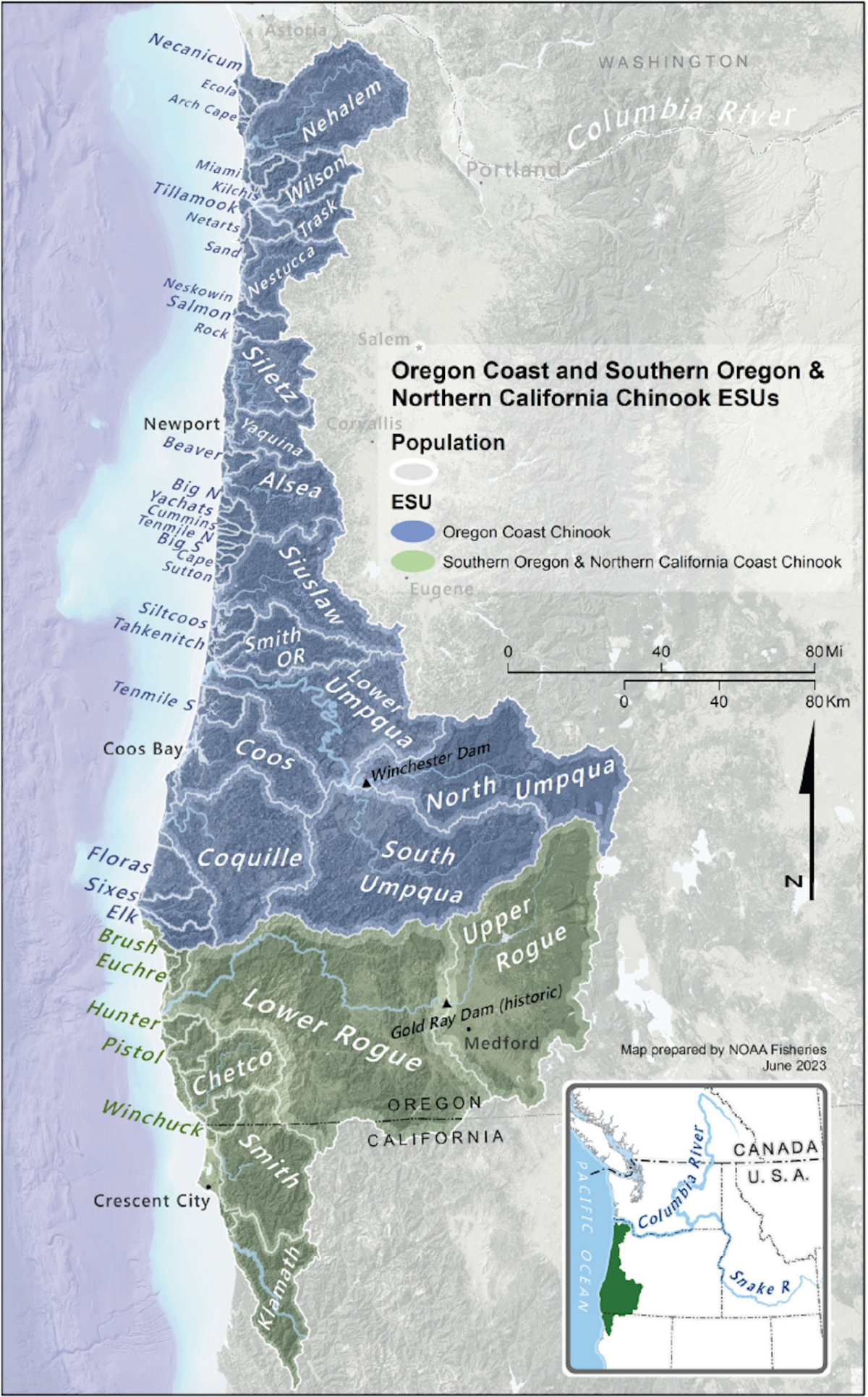
Feds Complete Status Reviews Of Oregon Coast, NorCal Chinook Populations
Federal salmon overseers say Oregon Coast Chinook face a low risk of extinction, according to a recently concluded deep dive into the health of runs stretching from the Necanicum in the north to the Elk and Sixes in the south.

It’s not the final word on whether an Endangered Species Act listing is needed or not, but the 195-page status review does represent an assessment by the National Marine Fisheries Service’s Northwest Science Center in response to a petition filed in 2022 to list the stock and will be a relief to fishermen and salmon managers.
NMFS says the scientists reached their conclusion based on a relatively high overall abundance of Oregon Coast Chinook, including “multiple” rivers with 10,000 or more spawners in average years, and a total population “commonly greater than 100,000 spawners.”
Even as some members of the review team expressed concern about the relatively high rate of harvest – more than 50 percent for most rivers – that was also seen “as evidence of relatively high productivity, because the populations are generally maintaining their abundance.”
While the spring Chinook component of the population, found in the Tillamook and Umpqua Basins, was at moderate risk of extinction, they were deemed “not significant to the long-term viability of the (evolutionarily significant unit) due to the lack of spring run-specific habitat in most of the river systems and the lack of strong evidence that the spring run was historically a major component of the ESU.”
The scientists’ 12-month finding will now be followed by an evaluation of both ongoing and new conservation efforts that may help to reduce factors threatening the salmon. ODFW uses the Coastal Multi-Species Conservation and Management Plan for the population.
A NMFS flow chart on the listing process also shows that status reviews are subject to peer review. A final determination on the petition to list Oregon Coast Chinook is expected this spring, according to the agency.

However, the news wasn’t as good for Chinook in the Southern Oregon and Northern California ESU, which stretches from Bandon to the Klamath River. Even as the overall population is also at low risk of extinction, key components aren’t doing as well, raising the risk for the entire stock.
“The status review team concluded that significant portions of the SONCC Chinook ESU were most likely at moderate risk of extinction: the spring-run component in the Rogue River basin and the coastal (non-Rogue River) populations,” NMFS stated.
Researchers say a sizeable decline in recent years in the Rogue and lack of a notable recovery “despite considerable ongoing conservation efforts,” as well as issues around the river’s Lost Creek Dam that could be contributing to gene flow between springers and fall Chinook and the odds of “very high summer stream temperatures” forecast for the end of the 2000s are all cited as risk factors for the watershed.
“Risk factors for the populations in coastal streams include the relatively small sizes and small number of coastal populations, and the lack of adequate population level monitoring in the Smith River basin,” NMFS adds.

The petition to list Chinook in both ESUs was filed by Native Fish Society, Center for Biological Diversity and Umpqua Watersheds in August 2022. In January 2023, NMFS found that listings might be warranted and tasked the Northwest Fisheries Center with looking into it, which led to the findings.
It was just one of several petitions focused on coastal salmonids that landed on the feds’ collective desk in recent years. Washington Coast Chinook and Olympic Peninsula steelhead are also undergoing 12-month findings.
